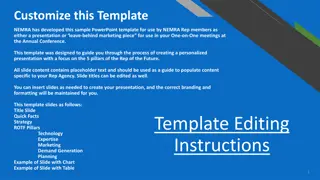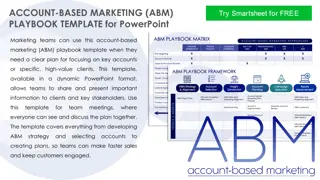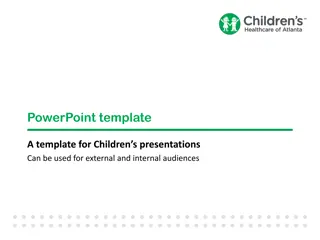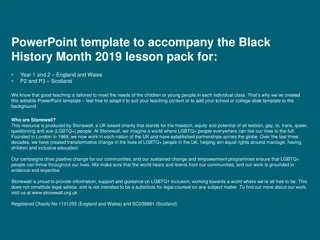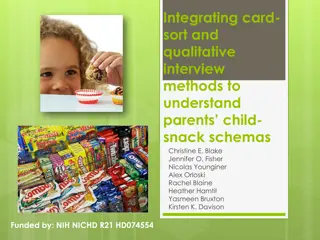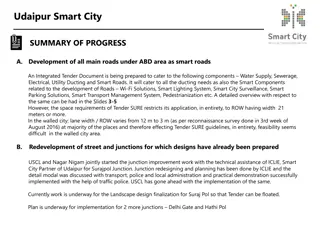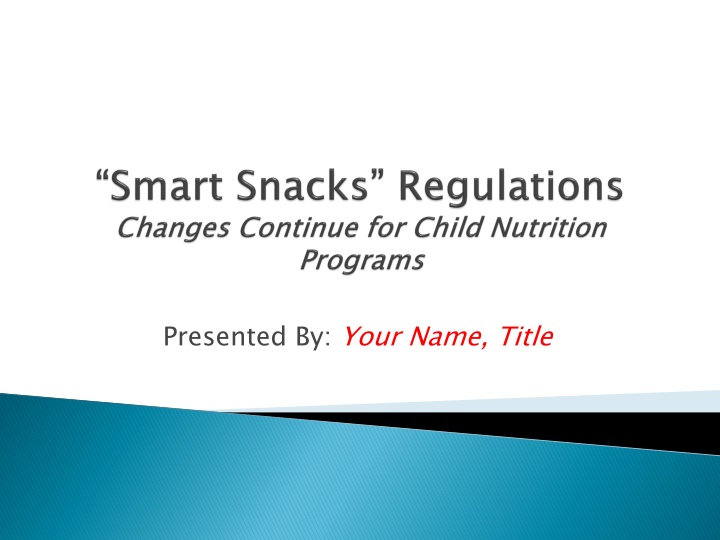
The Healthy Hunger Free Kids Act 2010 and its Impact
Explore the Healthy Hunger Free Kids Act 2010 (HHFKA) to understand its 2 main purposes: increasing access to healthy foods for kids and families, and addressing childhood obesity and hunger issues. Learn about the challenges faced after implementing a new lunch meal pattern in 2012, such as higher costs and decreased participation. Discover the regulations for Smart Snacks in schools, including nutrition standards and restrictions on calories, sodium, fat, and sugar. Dive into the established nutrition standards for all foods and beverages sold on school campuses.
Download Presentation

Please find below an Image/Link to download the presentation.
The content on the website is provided AS IS for your information and personal use only. It may not be sold, licensed, or shared on other websites without obtaining consent from the author. If you encounter any issues during the download, it is possible that the publisher has removed the file from their server.
You are allowed to download the files provided on this website for personal or commercial use, subject to the condition that they are used lawfully. All files are the property of their respective owners.
The content on the website is provided AS IS for your information and personal use only. It may not be sold, licensed, or shared on other websites without obtaining consent from the author.
E N D
Presentation Transcript
Healthy Hunger Free Kids Act 2010 (HHFKA) 84 Pages 72 Sections . 2 Main Purposes Healthy Hunger Free Kids Act 2010 (HHFKA) 1. To increase access to healthy foods for kids & families. 2. To address the complex issues of childhood obesity & hunger.
A new lunch meal pattern was implemented in 2012. Higher costs, decreased participation and student acceptability of new requirements remain top challenges. According to SNA s 2013 Back to School Trends Report, 47% of school meal programs report that overall revenue declined in the 2012-13 school year Additional flexibility from USDA would help to address cost and participation concerns $.06 Menu Certification Process
30.4M National ADP in 2012-13 (down over 1M meals per day from 2011-12) 85,600 Michigan ADP in 2012-13 (down 10,667 meals per day from 2011-12) Add your districts stats here (Data Source: USDA FNS Key Program Data Report, Sept, 2013) Add your districts stats here
Regulations for Smart Snacks include Nutrition Standards for all foods and beverages sold in schools. Regulations for the time and place of when foods can be sold. Fundraisers and accompaniments with foods are also included under the regulations.
Specific Snack Item Criteria Whole grain, fruit or vegetable, combination foods must have at least cup fruit or vegetable Contain 10% DV of Ca, Potassium, Vit D, Fiber) Specific Snack Item Criteria: Specific Nutrient Requirements: Limits on Calories, Sodium, Fat and Sugar Specific Nutrient Requirements: Nutrition Standards for Beverages Restrictions by grade level No portion size restrictions for plain water Nutrition Standards for Beverages: Other Requirements: Fundraisers and Accompaniments Other Requirements:
Nutrition Standards have been established for all foods and beverages sold: 1. outside of school meal programs 2. on the school campus 3. any time during the school day from midnight to 30 minutes after the last bell
Programs & Foods Not Affected Programs & Foods Affected 1. Foods sold in concession stands after the school day 2. Foods brought in from home by students (school lunch, snacks or class treats) 3. Foods served/sold to adults as part of student culinary programs 4. Foods sold for fundraisers distributed after the school day for home consumption (i.e. Pizza Kits, Market Day, Cookie Dough) 1. Foods Sold in School Stores 2. Foods Sold to students as part of student culinary program 3. Food Sold in Vending Machines 4. Foods Sold for Fundraisers that are ready-to-eat (bake sales, etc) 5. Foods Sold in the cafeteria that are not part of the reimbursable meal All of the above must meet Smart Snacks in Schools nutrition guidelines
Smart Snacks is a law required for school districts that participate in the NSLP beginning July 1, 2014. Smart Snacks will remain an interim rule during the first year of implementation so feedback can be evaluated and updates can be made by USDA Now is the time to bring everyone to the table so all stakeholders are informed and prepared for the 2014-15 school year


